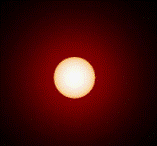Department of Physics and Astronomy: Publications and Other Research

Norman R. Simon Papers
Document Type
Article
Date of this Version
3-15-1983
Citation
THE ASTROPHYSICAL JOURNAL, 266:787-793,1983 March 15
Abstract
Fourier decomposition is employed to compare observed light and velocity curves of classical Cepheids with light and velocity curves generated by two sets of hydrodynamic models-the Carson-opacity models of Vemury and Stothers (VS) and a set of models constructed with Los Alamos opacities and dynamical zoning (LOS). In spite of the fact that a number of the theoretical light and (particularly) velocity curves appear to the eye to resemble the observations, the Fourier decompositions reveal severe shortcomings in both sets of calculations. The VS velocity curves are found superior to LOS in reproducing sharp resonance effects in the observations, but the VS light curves are not nearly so successful. With regard to the LOS calculations, resonance effects in both the light and velocity curves are generally much muted compared with their striking presence in the observational data. At the moment it is not clear if the difference between VS and LOS is an opacity effect. Finally, we examine various definitions of the light-radius phase lag in the theoretical models. It is suggested that a phase lag obtained from the Fourier decompositions will ultimately be the most useful for comparison with observation. When the phase lag is defined in this manner, the dynamically zoned LOS models produce the most plausible and consistent results.


Comments
Copyright 1983 The American Astronomical Society. All rights reserved.